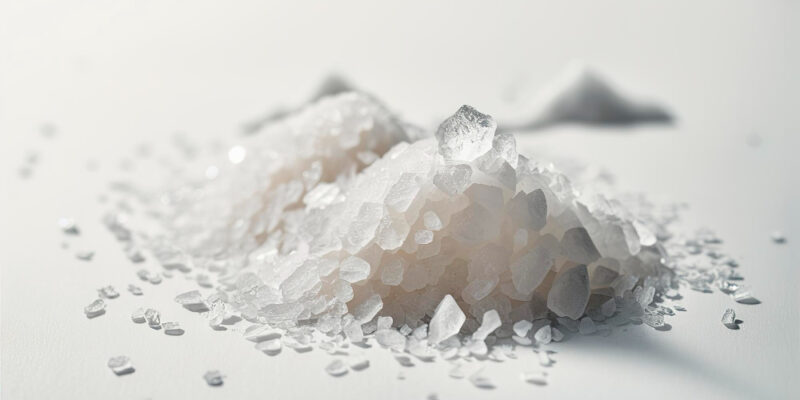Potassium feldspar is one of the most common minerals on Earth, yet it remains a mystery to many. Found in rocks, ceramics, and even in everyday products, this versatile mineral plays a vital role in our lives. So, what makes potassium feldspar so special? Let’s dive into this fascinating topic.
What is Potassium Feldspar?
Potassium feldspar, also known as K-feldspar, is a group of minerals that contain potassium, aluminum, and silica. This mineral group is a critical component of the Earth’s crust and is used in a variety of industries, from ceramics to glassmaking.
Composition of Potassium Feldspar
Chemical Makeup
Potassium feldspar has the formula KAlSi₃O₈, which highlights its potassium, aluminum, and silica content. It forms in igneous, metamorphic, and sedimentary rocks.
Varieties
Potassium feldspar comes in several forms:
- Orthoclase: Known for its creamy color and use in ceramics.
- Microcline: Distinguished by its grid-like twinning patterns.
- Sanidine: Often found in volcanic rocks.
How Does Potassium Feldspar Form?
This mineral forms under high-temperature conditions in igneous rocks. Over time, weathering and geological processes expose it to the surface, where it can be mined.
Key Physical Properties
- Hardness: 6 on the Mohs scale, making it moderately durable.
- Color: Ranges from pink to white, with some green and gray varieties.
- Cleavage: Exhibits two perfect cleavages at nearly 90°.
- Luster: Glassy to pearly.
Where is Potassium Feldspar Found?
Potassium feldspar is abundant worldwide, but significant deposits are found in:
- United States: South Dakota, Virginia, and North Carolina.
- India: A major exporter of feldspar.
- Brazil: Known for high-quality deposits.
- Italy: Popular for ceramic-grade feldspar.
Applications of Potassium Feldspar
1. Ceramics Industry
Potassium feldspar is a key ingredient in the production of ceramics, helping to:
- Lower firing temperatures.
- Enhance the strength of finished products.
- Improve the texture of ceramics.
2. Glass Manufacturing
In glass production, feldspar acts as a flux to reduce melting temperatures and ensure clarity.
3. Paints and Coatings
Used as a filler to improve durability and resistance in paints.
4. Fertilizer
Its potassium content makes it a potential additive in soil conditioners.
Potassium Feldspar vs. Plagioclase Feldspar
Many confuse potassium feldspar with plagioclase feldspar, another member of the feldspar family. The primary differences are:
- Potassium Feldspar: Contains potassium and often appears pink or cream.
- Plagioclase Feldspar: Contains sodium or calcium and shows striations.
Environmental Impact
Mining potassium feldspar can impact ecosystems, but responsible practices, such as land restoration, minimize these effects. Sustainable sourcing is vital for long-term benefits.
Fascinating Facts About Potassium Feldspar
- It’s a major component of granite, one of the most common rocks on Earth.
- Ancient potters used feldspar to create high-quality ceramics.
- Feldspar crystals can grow to impressive sizes, with some measuring over a meter long.
Potassium Feldspar in Everyday Life
From tiles in your bathroom to the glass in your windows, potassium feldspar is all around you. It’s also used in laboratory settings and by geologists as an indicator of geological conditions.
Care and Maintenance of Feldspar Crystals
- Cleaning: Use mild soap and water to clean feldspar specimens.
- Storage: Keep away from acids to prevent surface damage.
- Display: Ensure proper lighting to highlight its natural luster.
How to Identify Potassium Feldspar
Tools for Identification
- Magnifying Lens: To inspect crystal structures.
- Hardness Test: Scratching it with a steel tool can confirm its hardness.
- Cleavage Examination: Look for two perfect cleavages at nearly 90° angles.
The Role of Potassium Feldspar in Geology
Geologists study feldspar to understand:
- Rock Formation: Its presence indicates specific igneous conditions.
- Weathering Processes: Feldspar weathers into clay minerals over time.
- Plate Tectonics: Provides clues about Earth’s dynamic processes.
Conclusion
Potassium feldspar might not be a household name, but its importance is undeniable. From shaping ancient pottery to enabling modern technology, this mineral plays a vital role in our world. Its versatility, abundance, and unique properties make it indispensable across industries.
FAQs About Potassium Feldspar
1. What is potassium feldspar used for?
It’s used in ceramics, glassmaking, paints, and fertilizers.
2. How can you identify potassium feldspar?
Look for its hardness (6 on Mohs scale), perfect cleavage, and pink or white color.
3. Is potassium feldspar safe to handle?
Yes, it’s non-toxic and safe for everyday use.
4. Why is it called potassium feldspar?
It gets its name from its high potassium content.
5. Can potassium feldspar be recycled?
Yes, it can be reused in some industrial processes, reducing waste.
